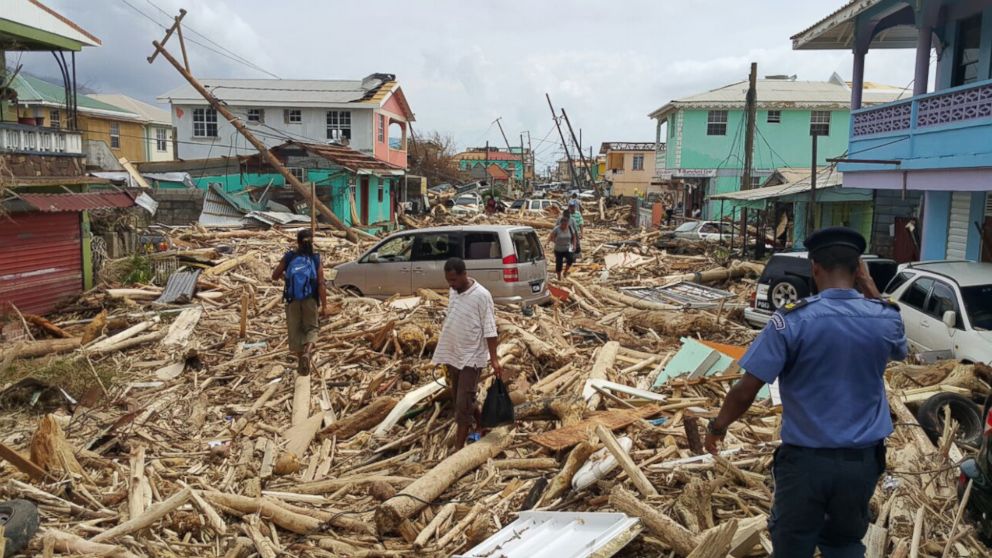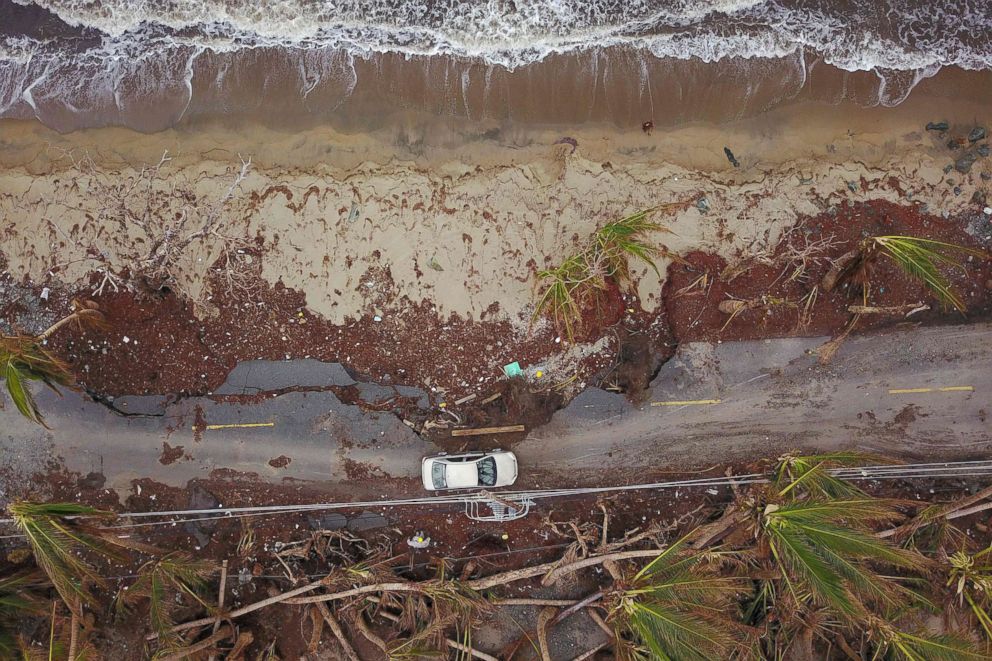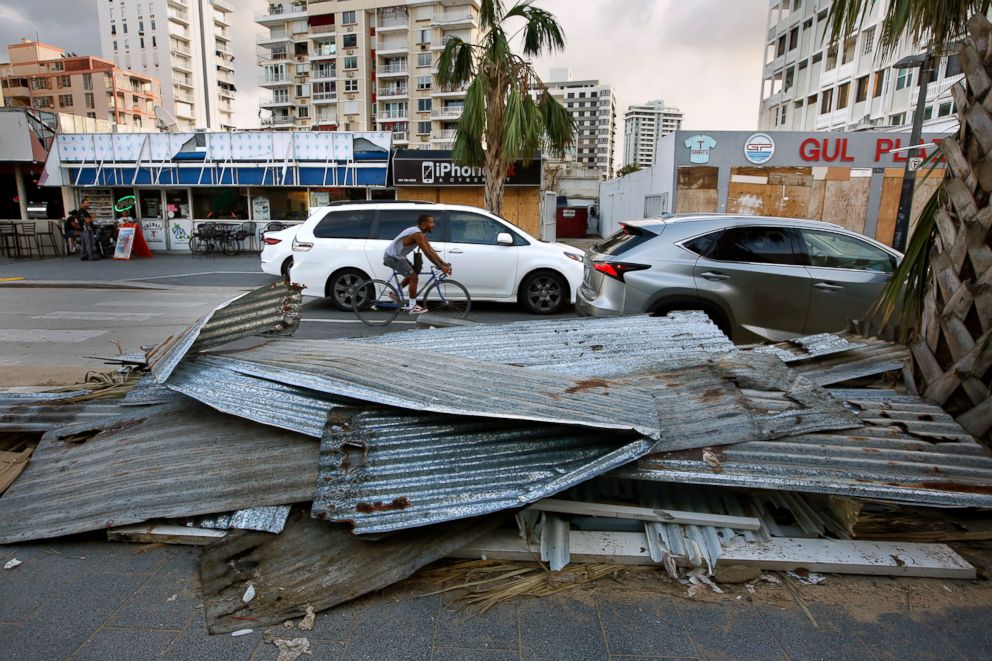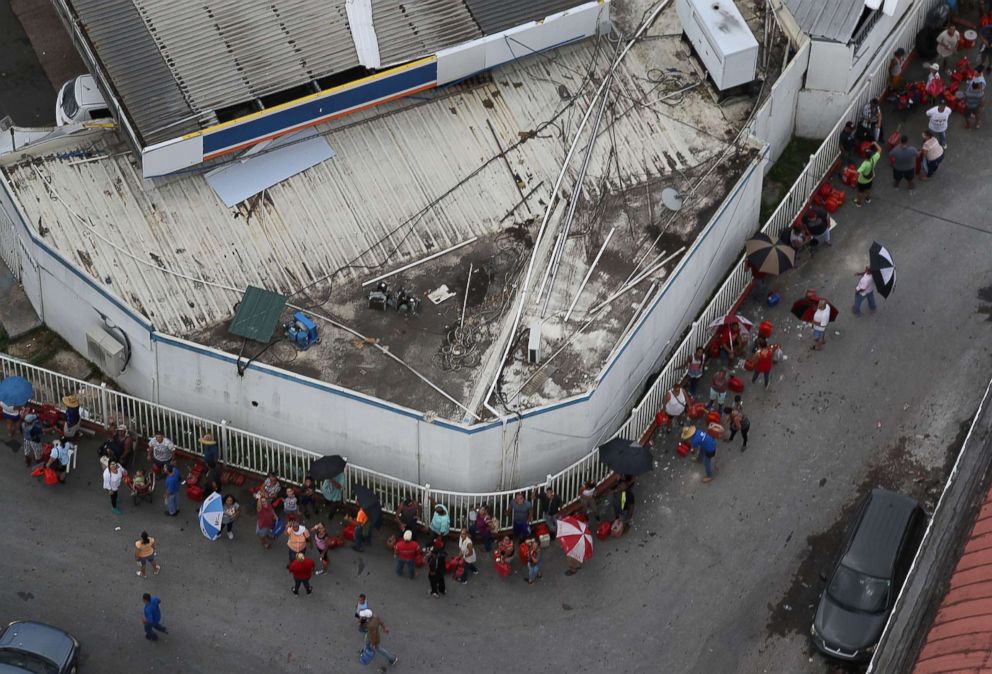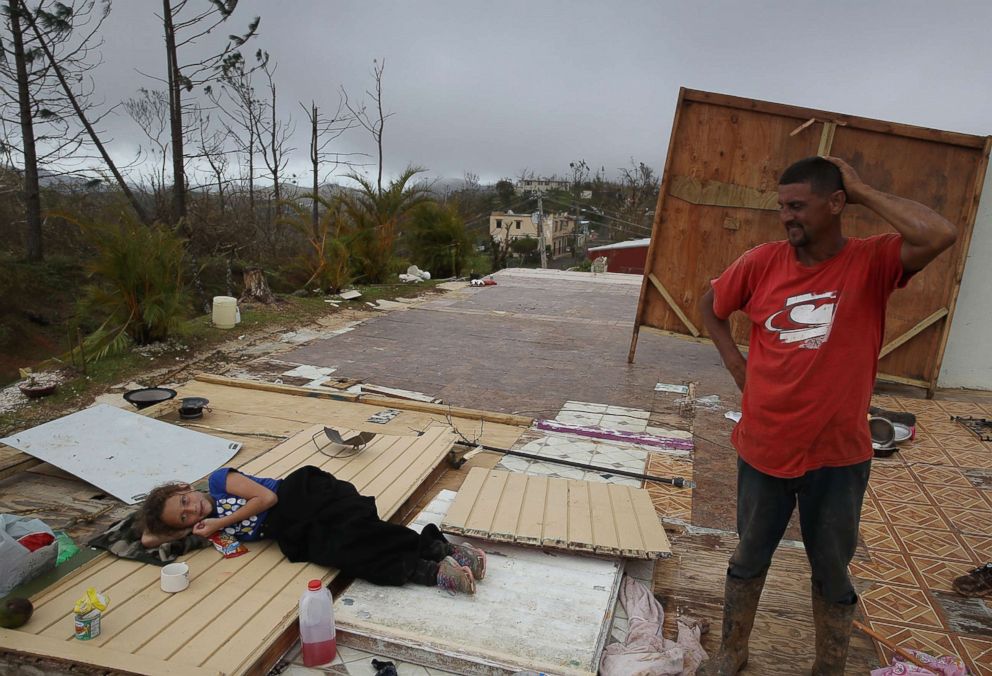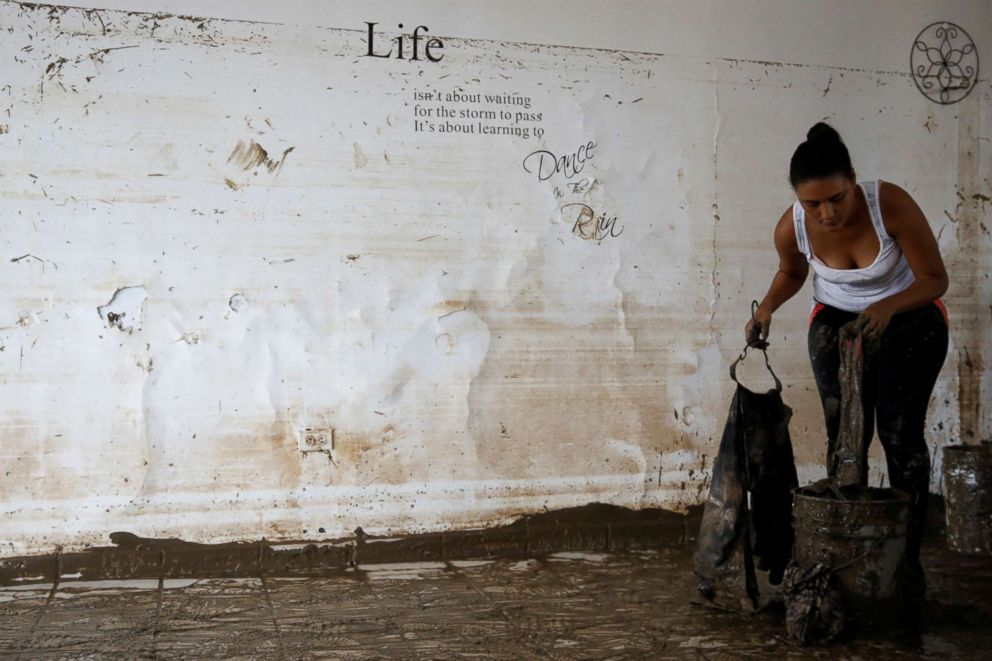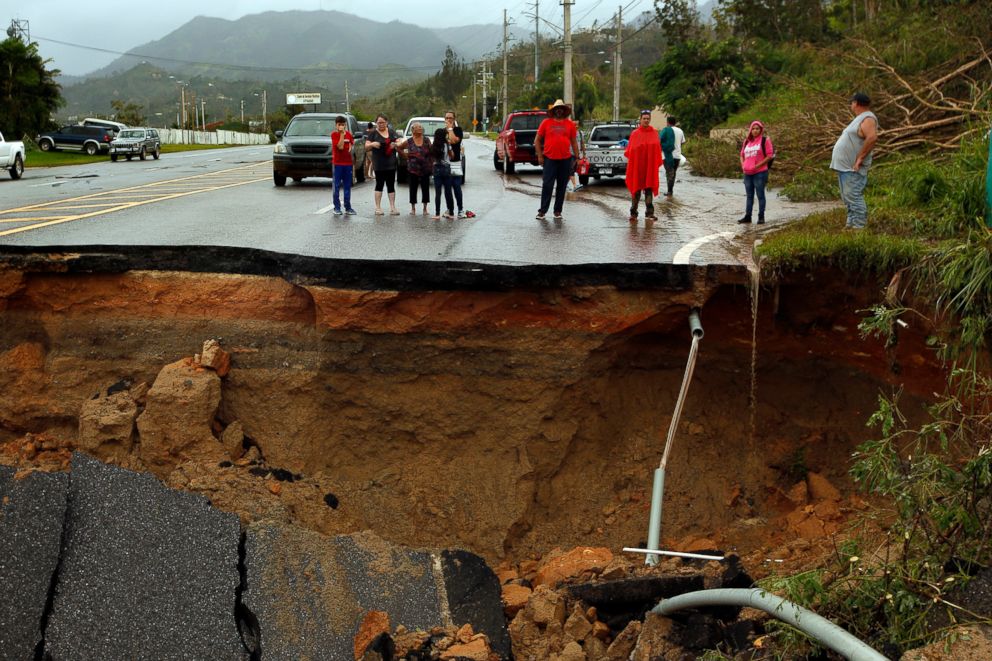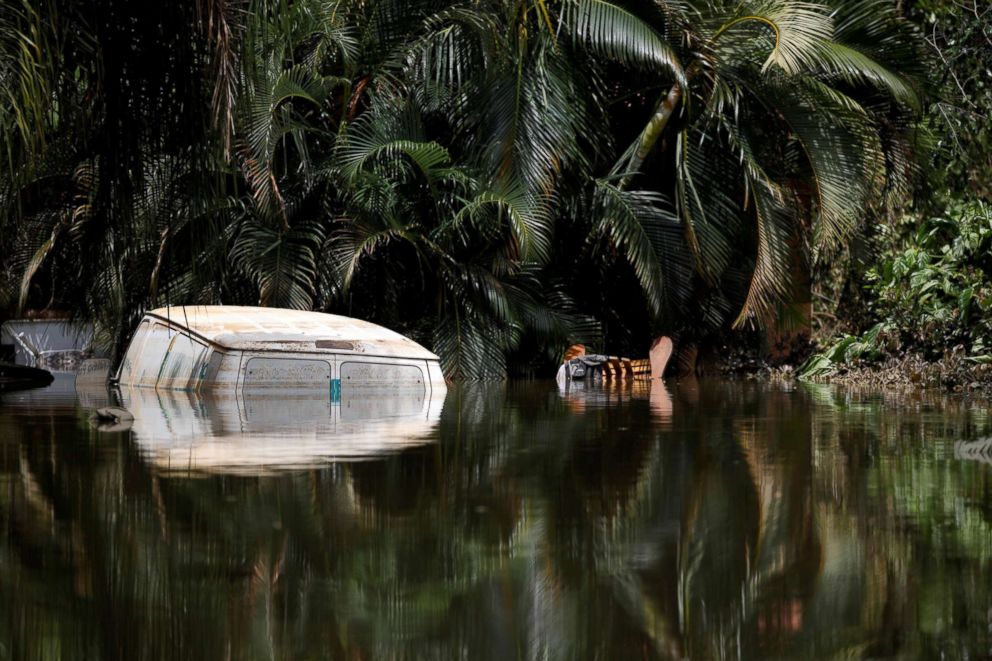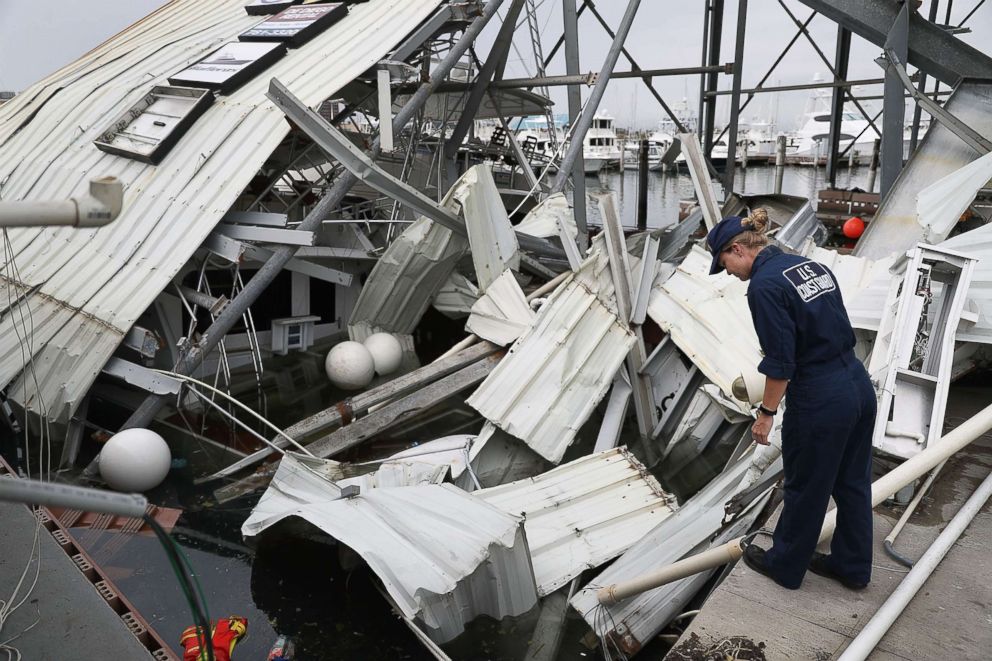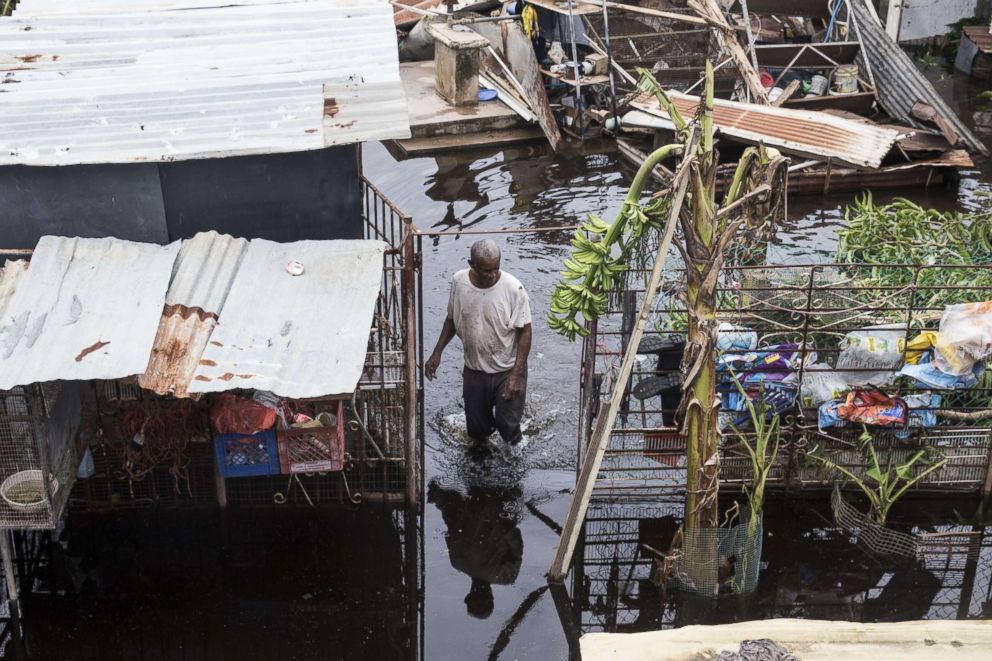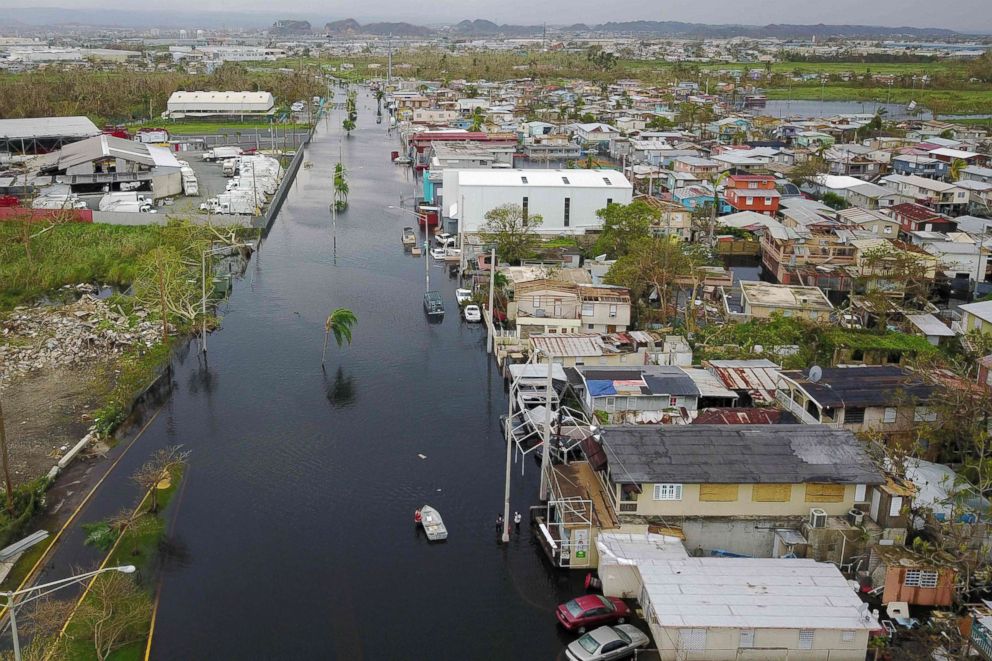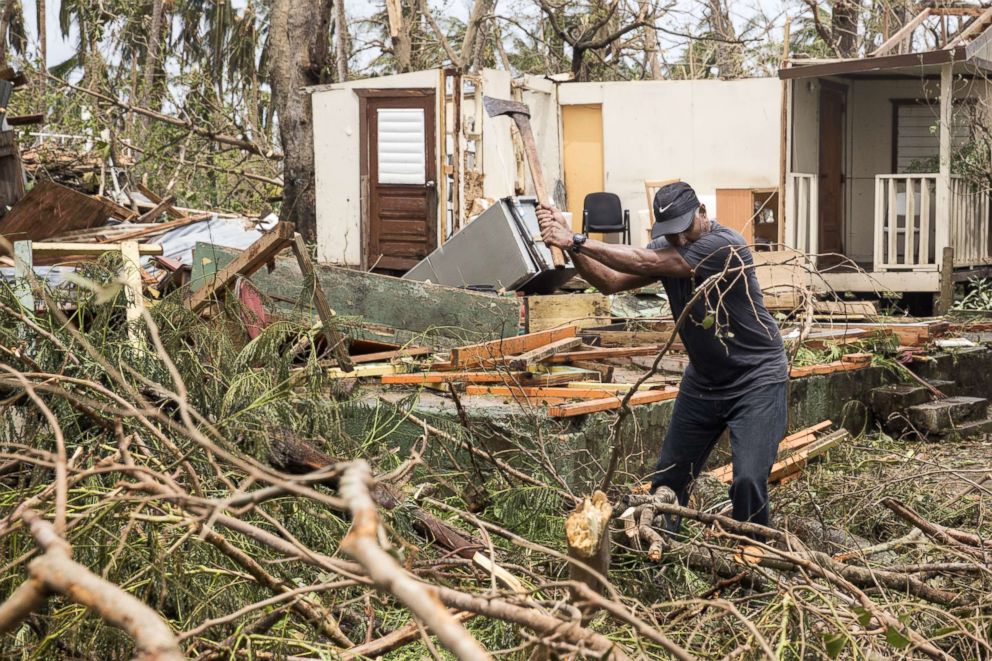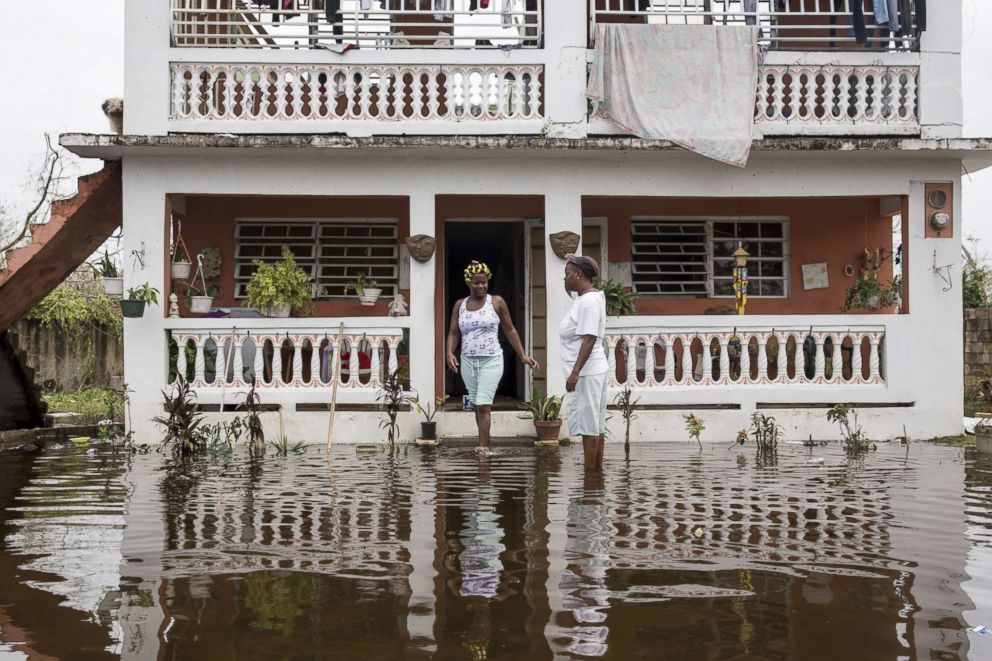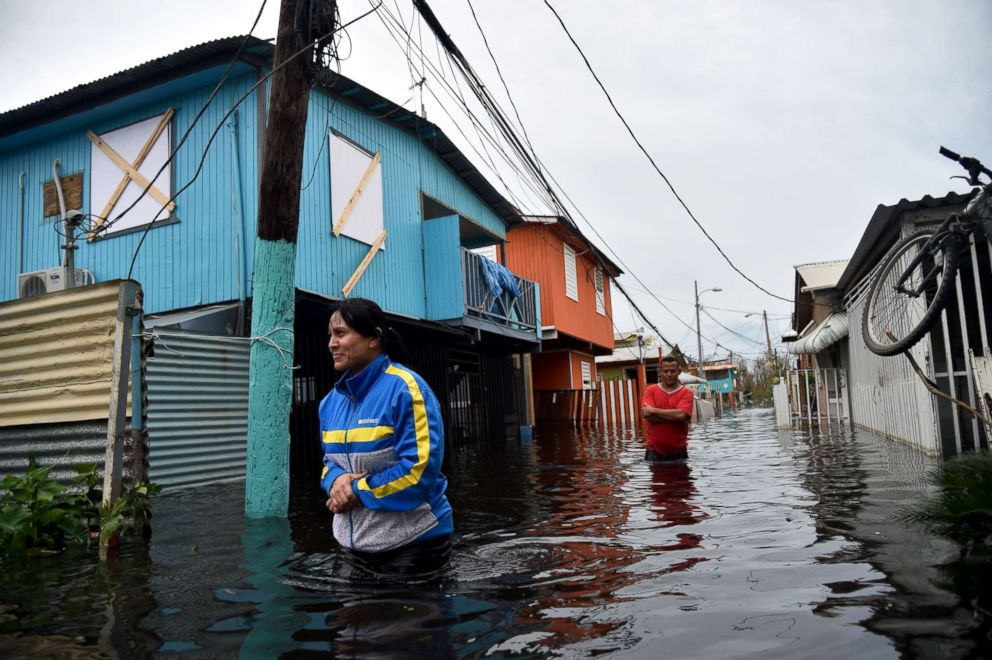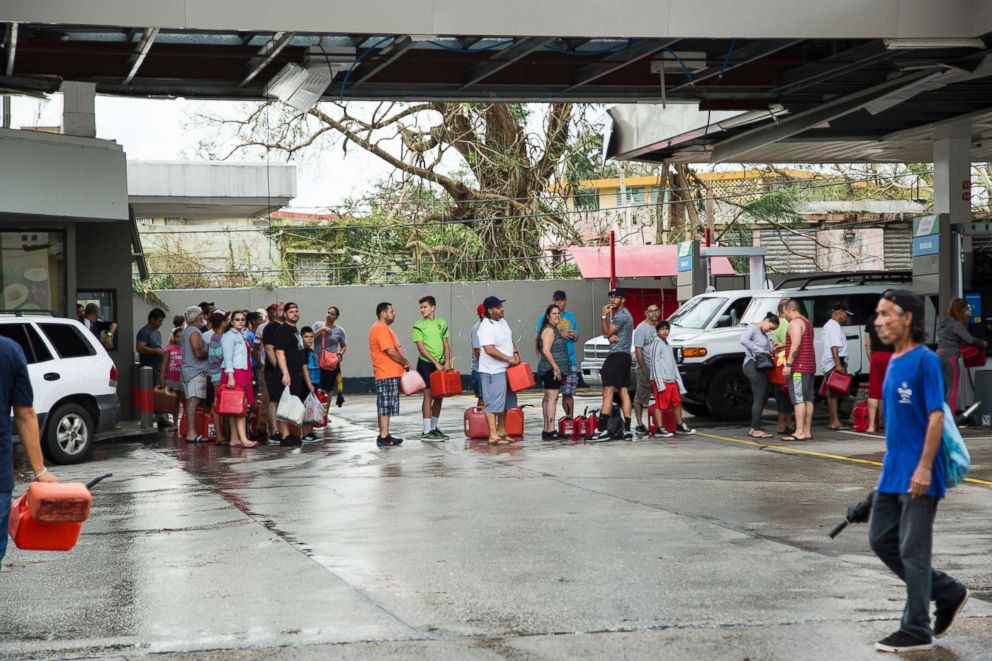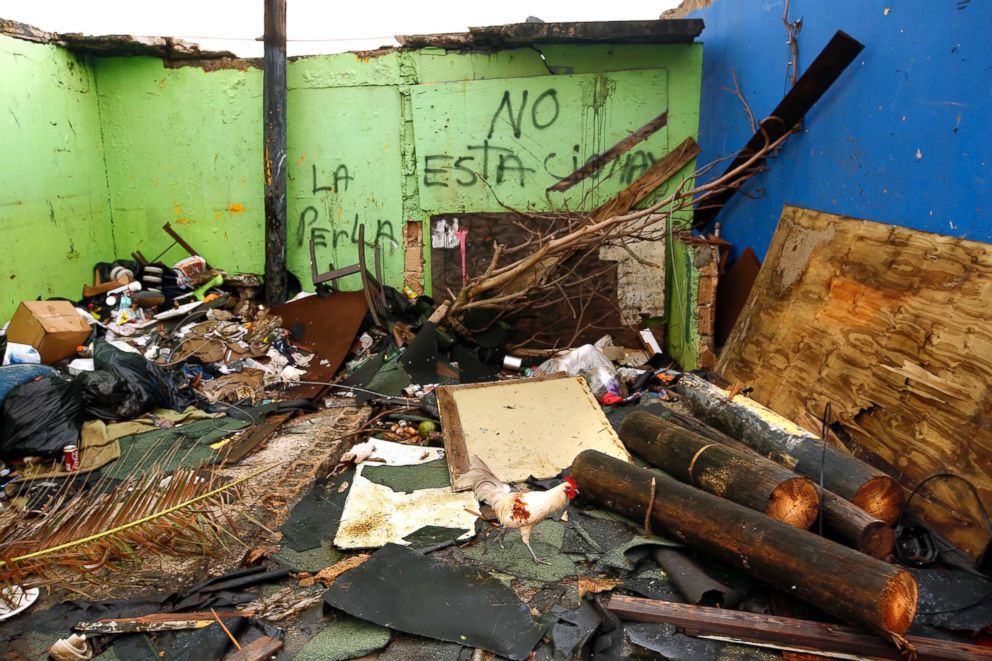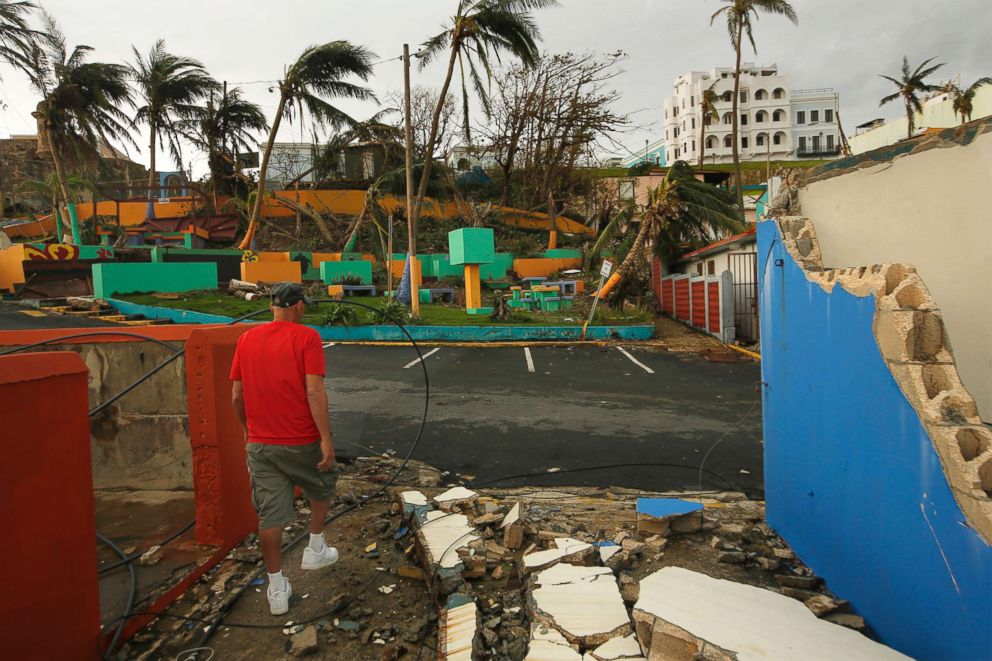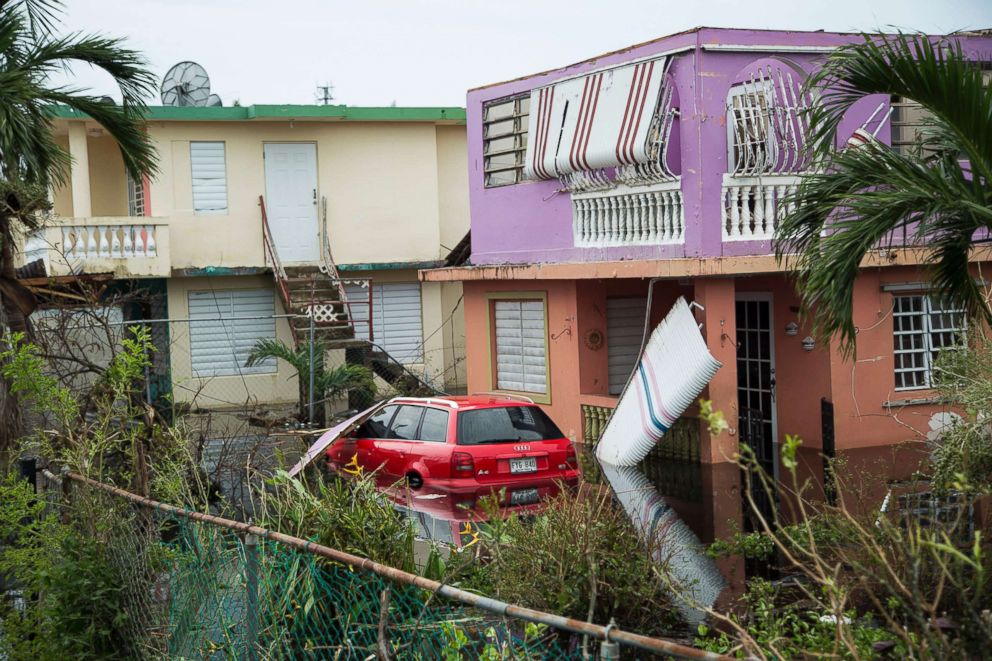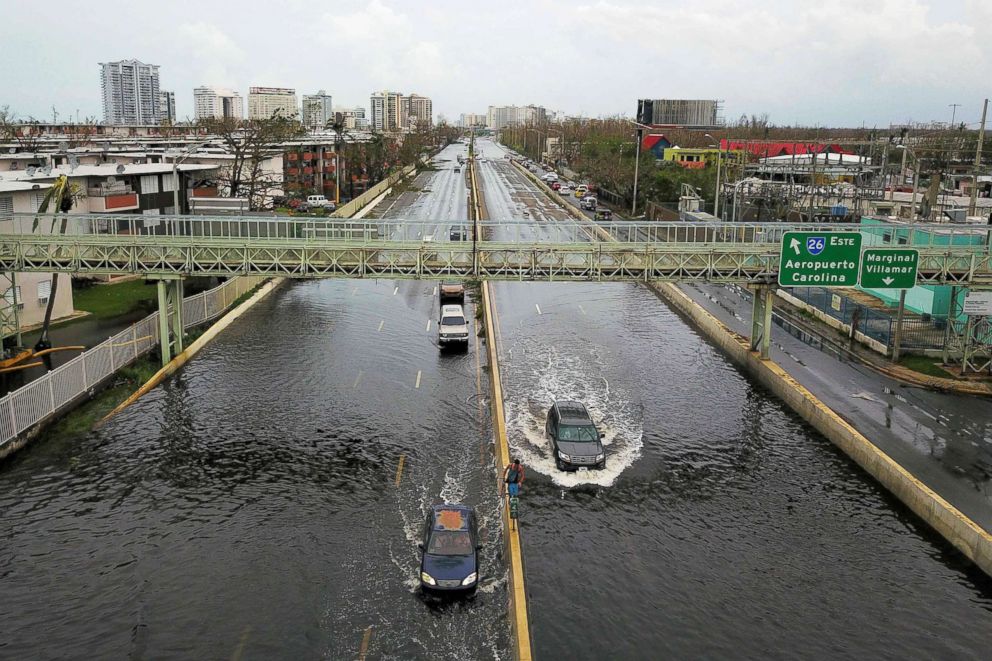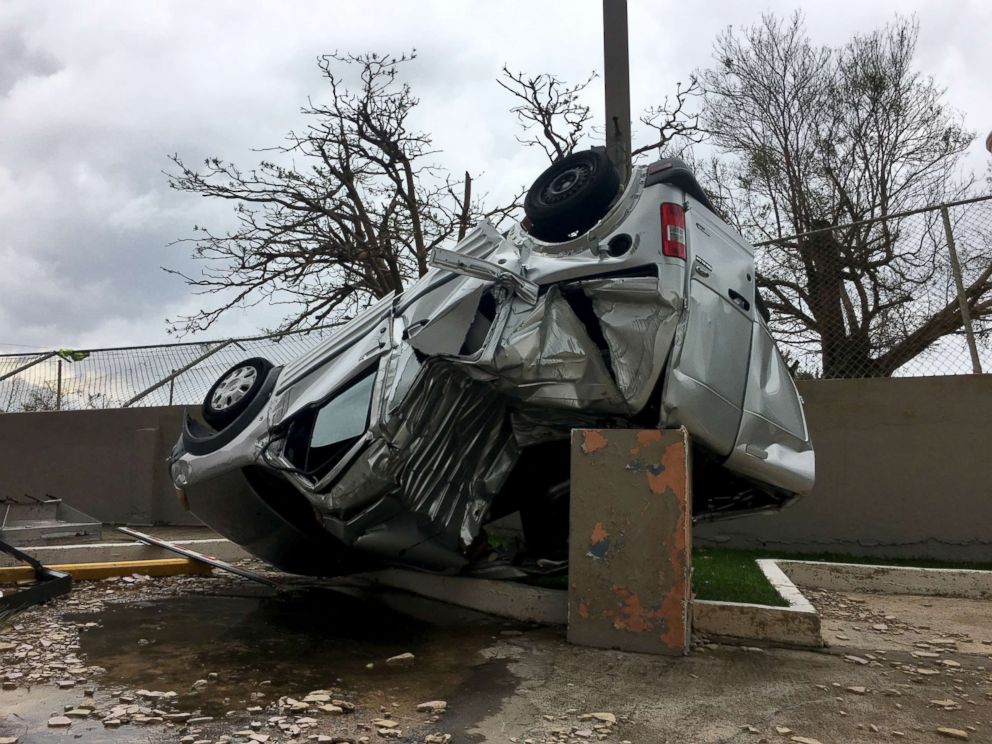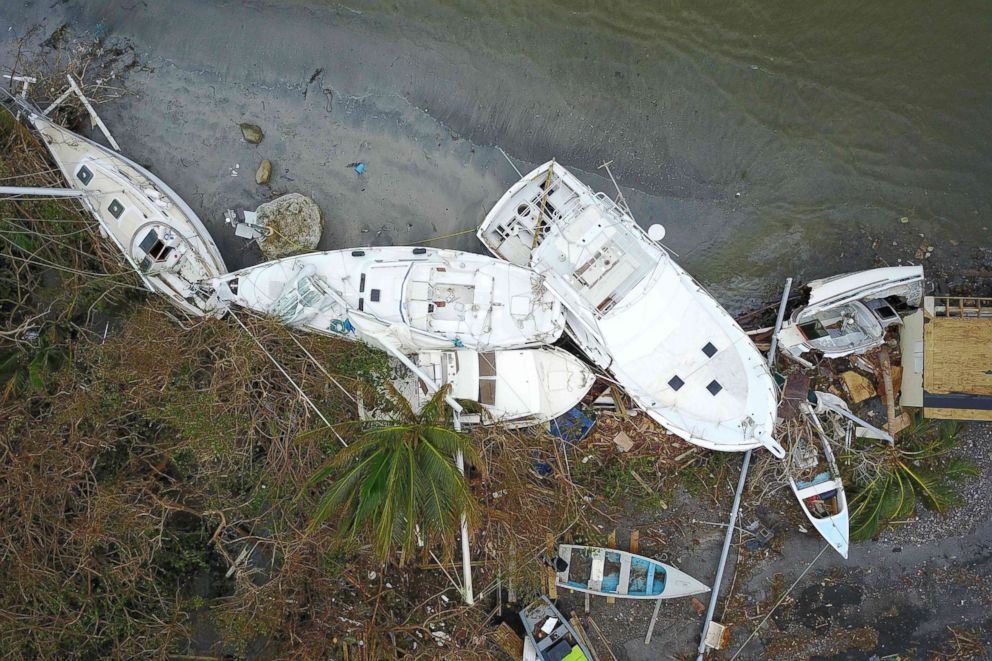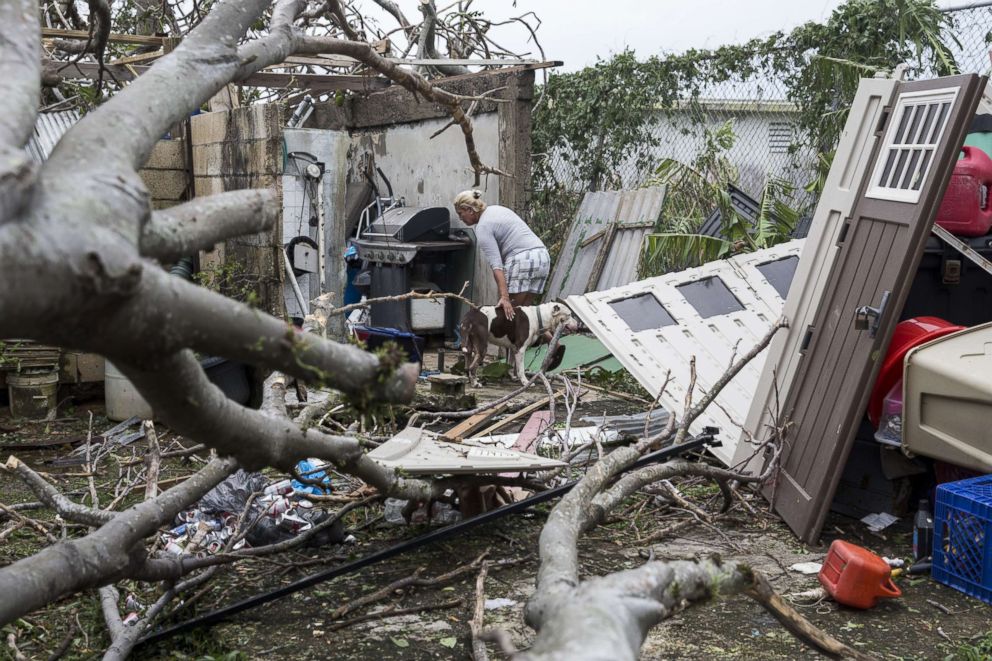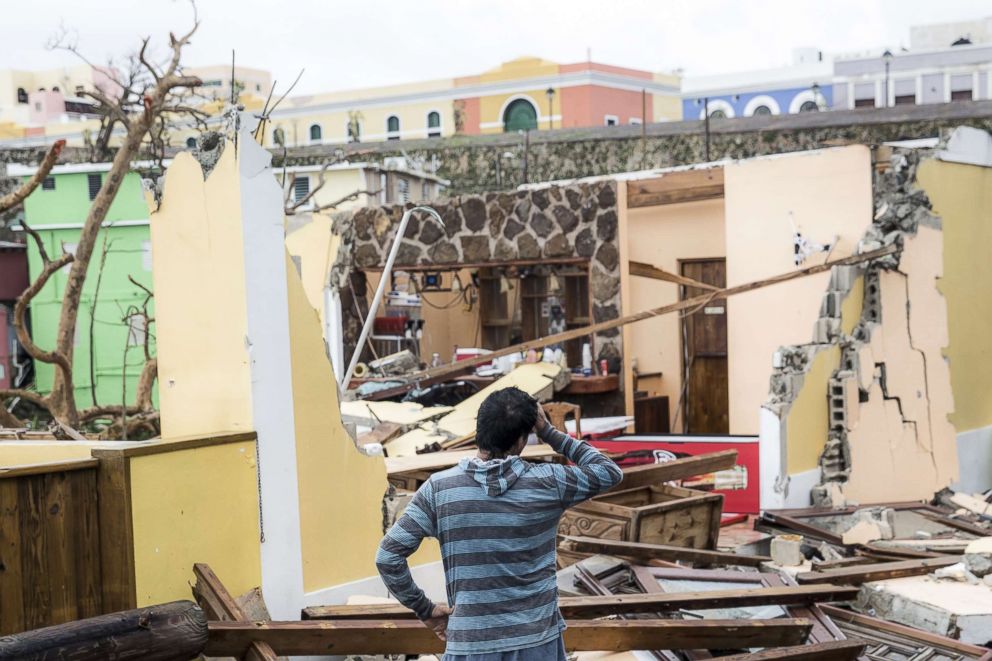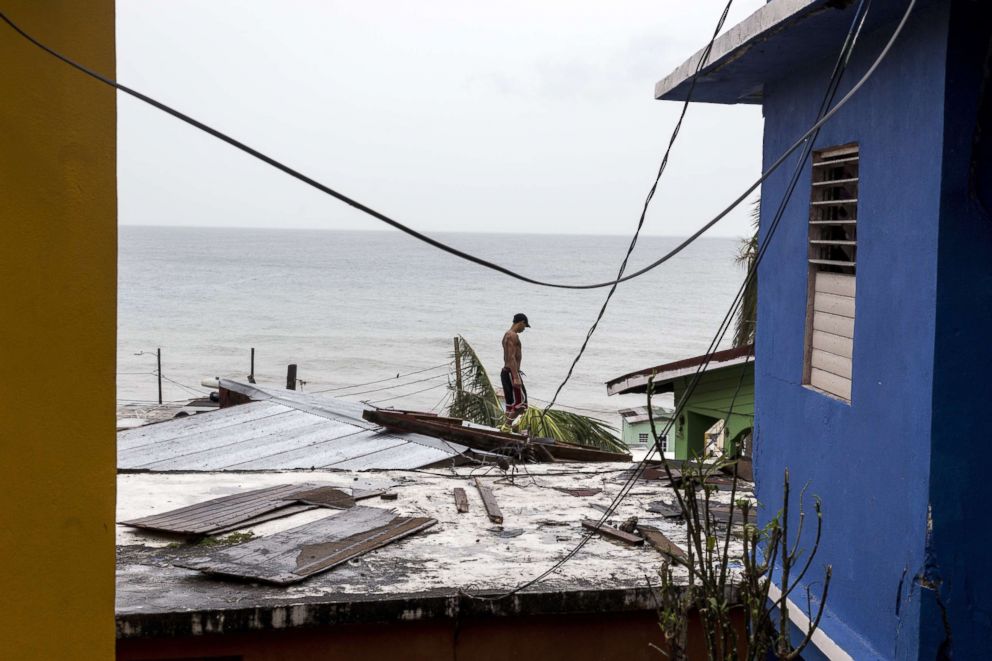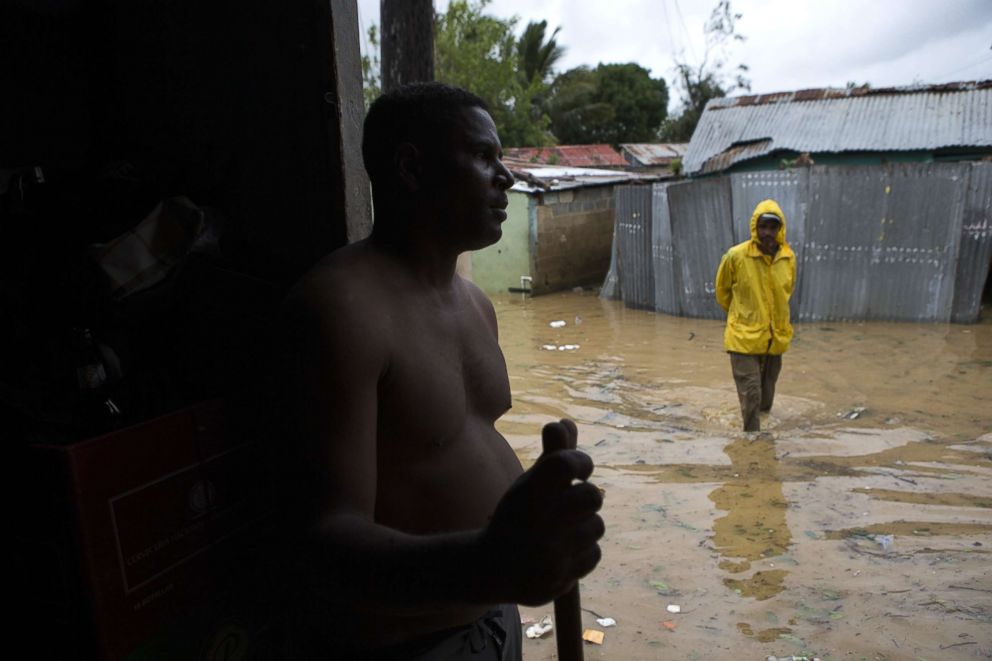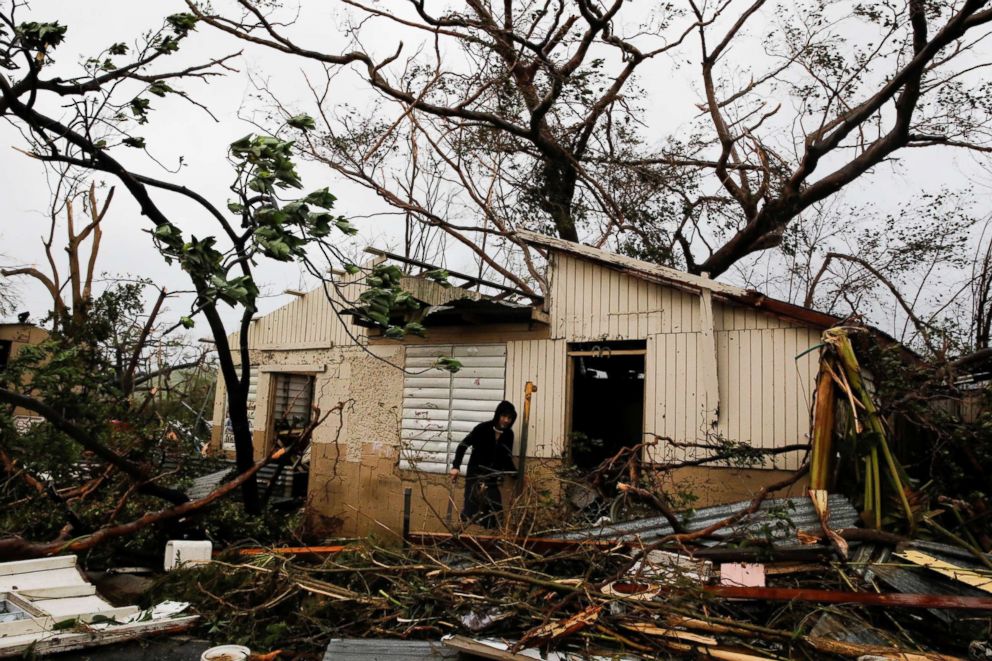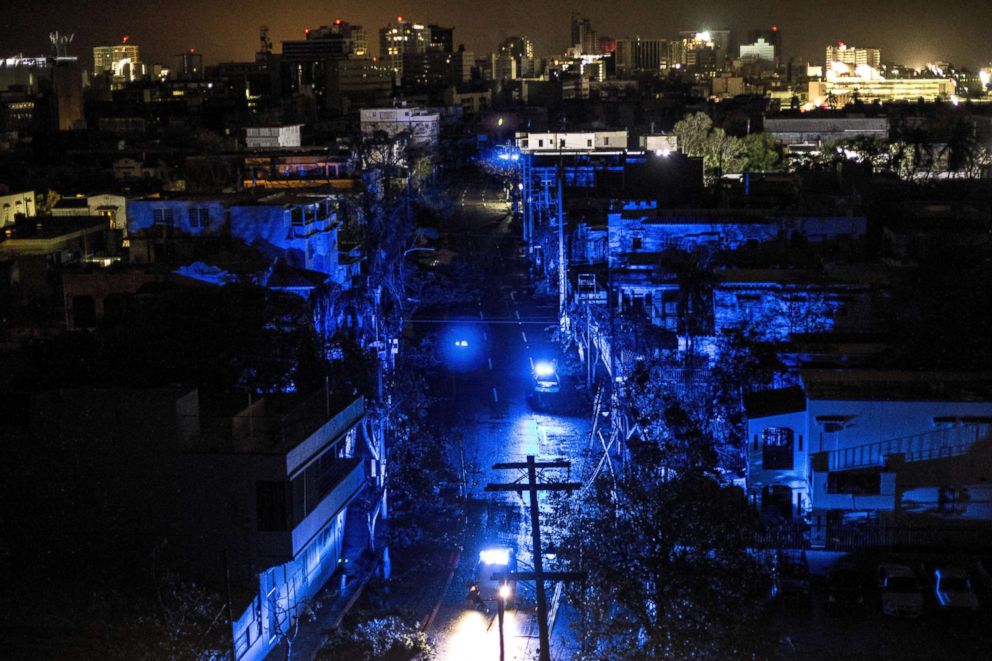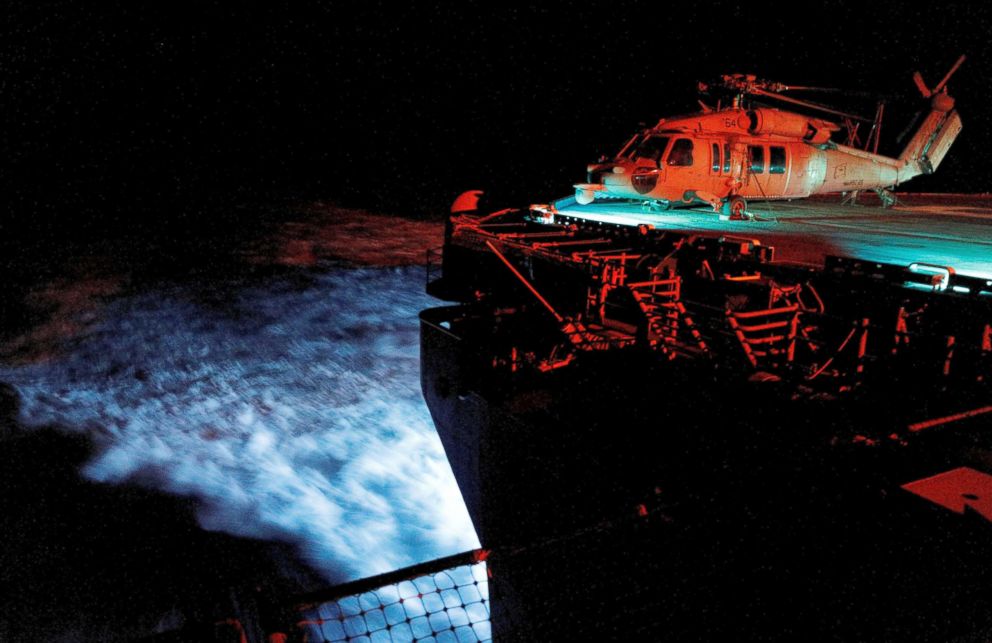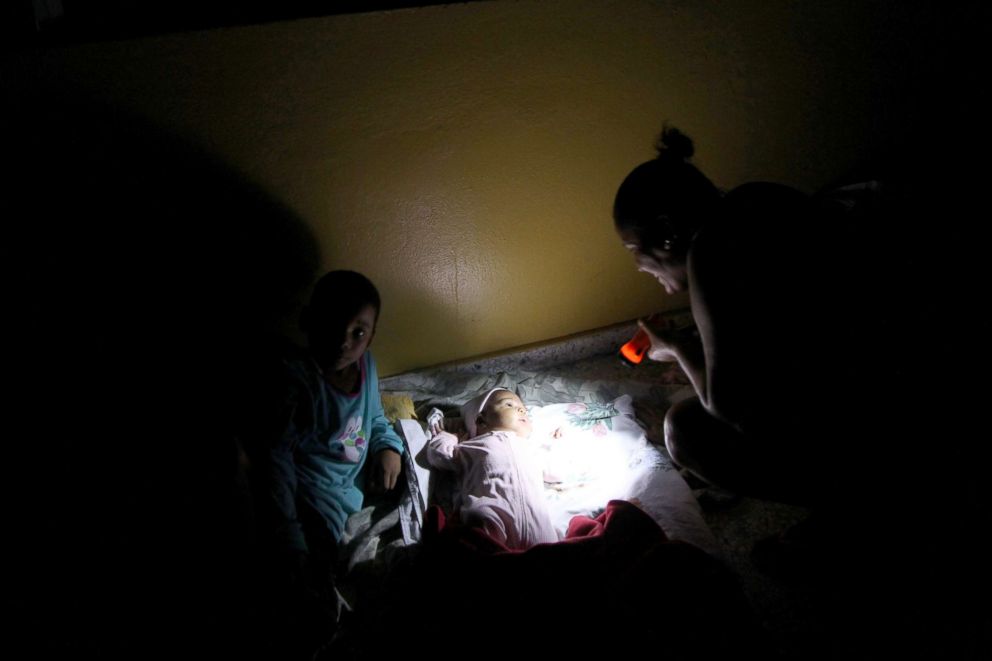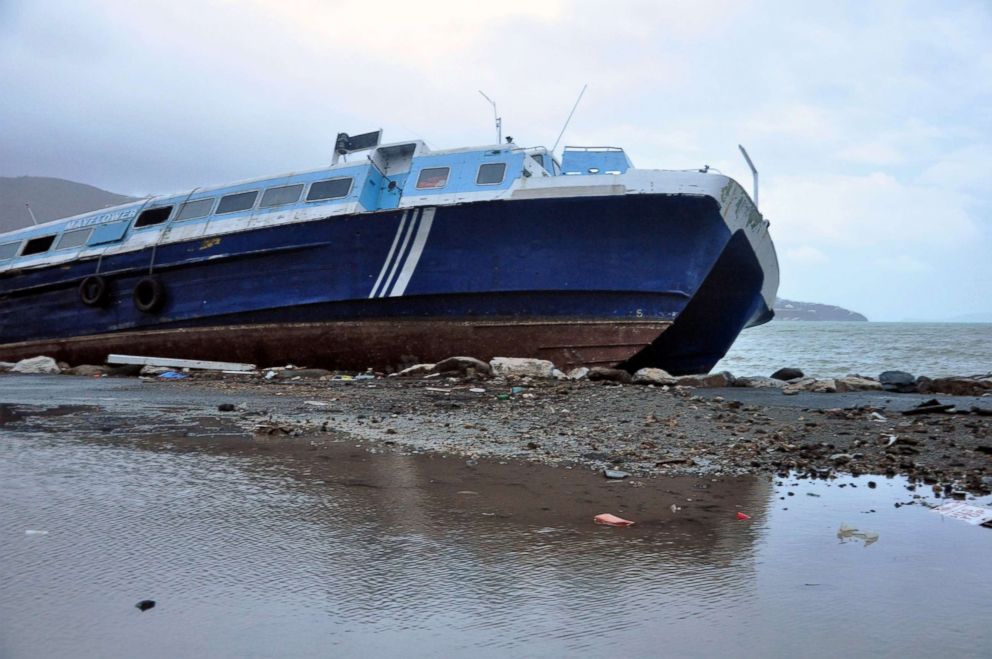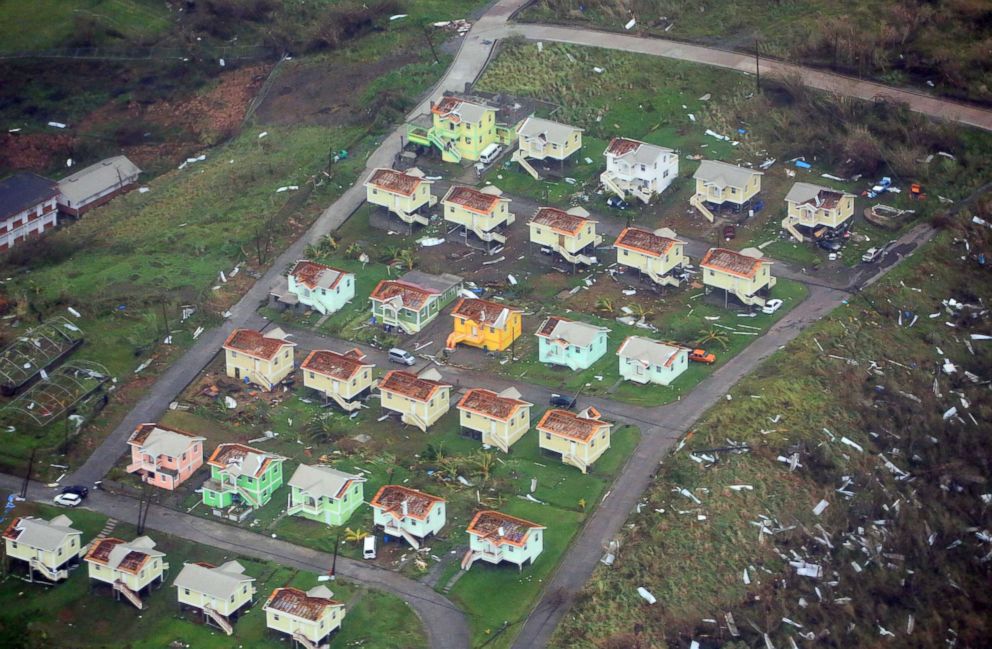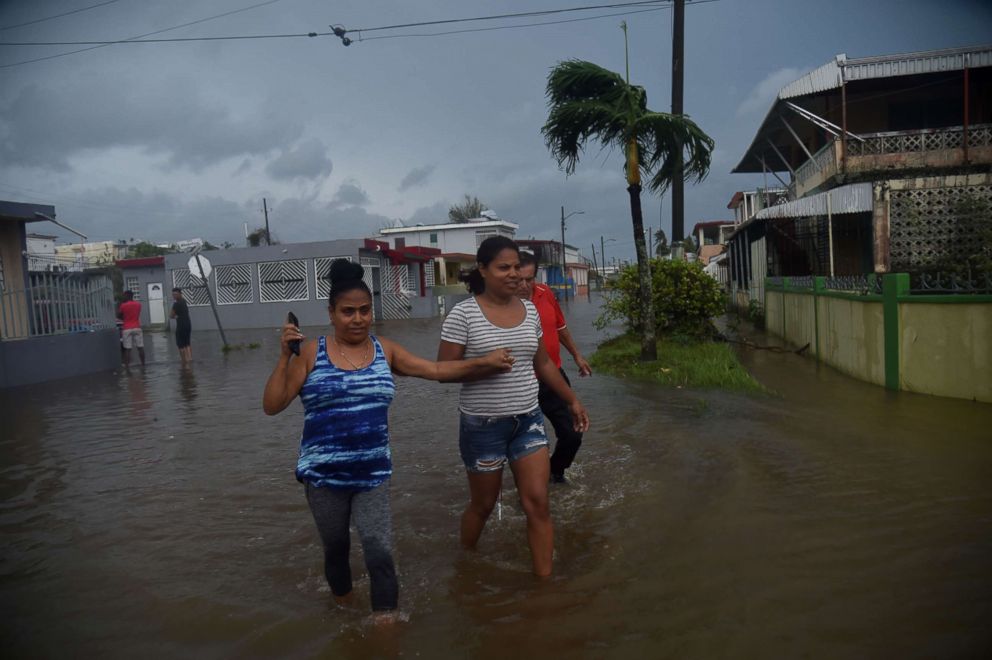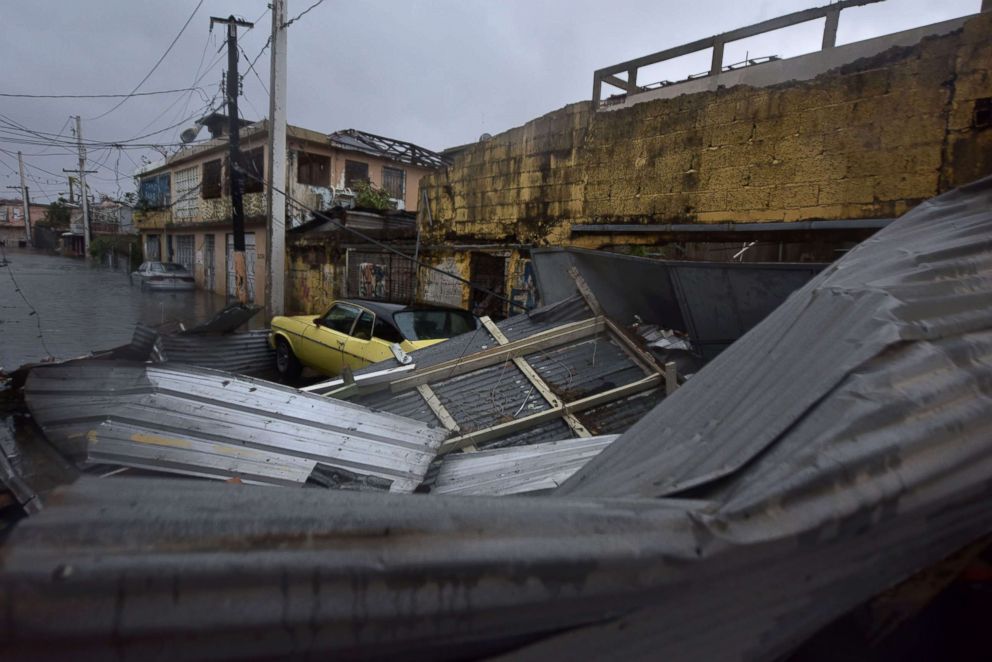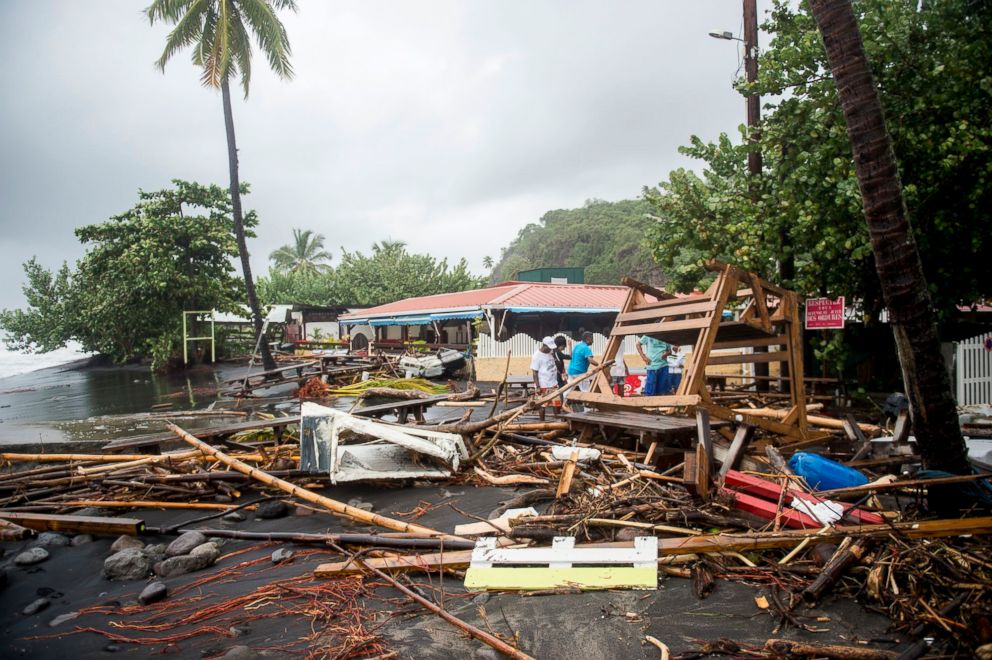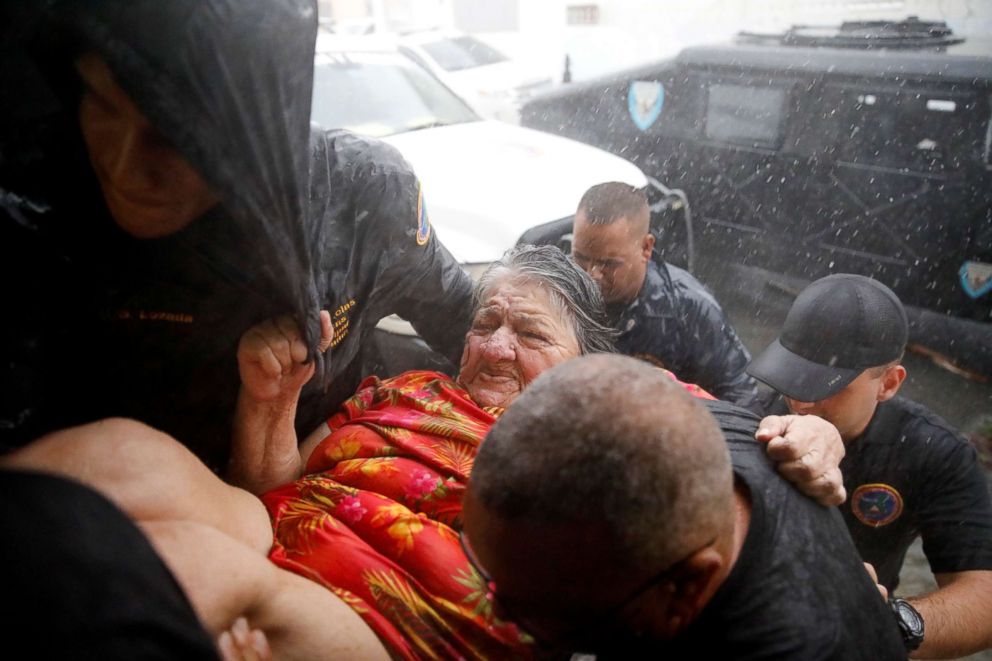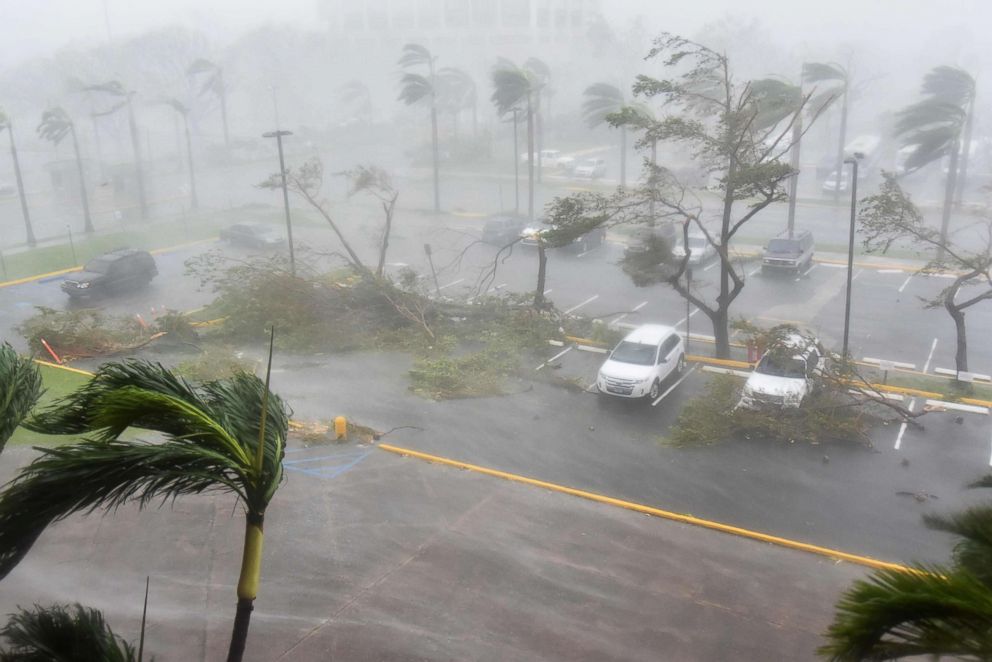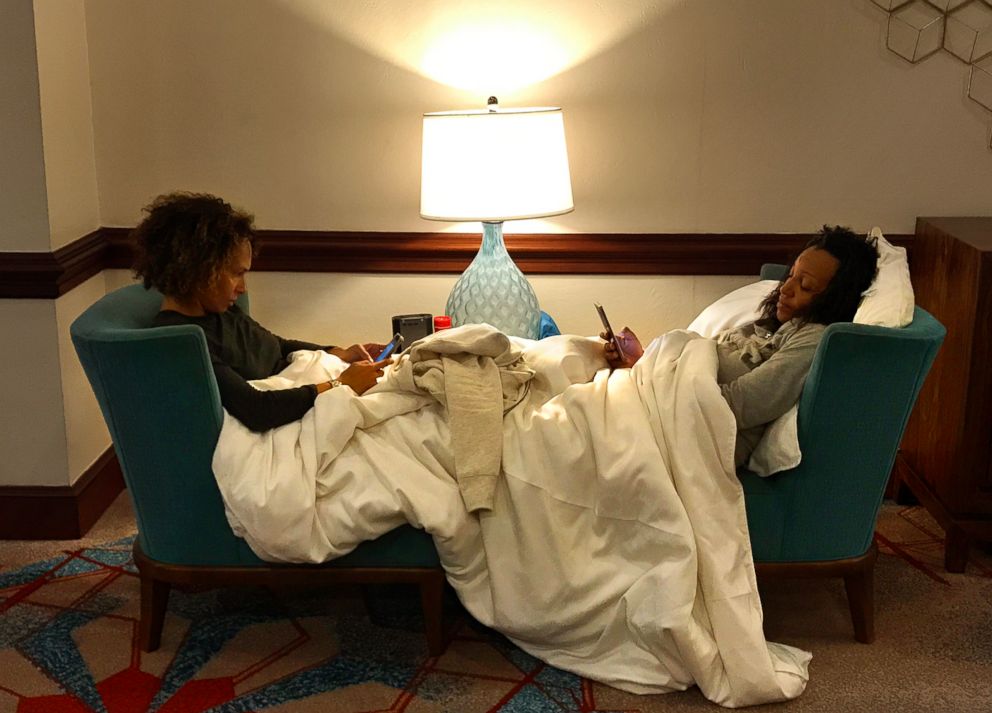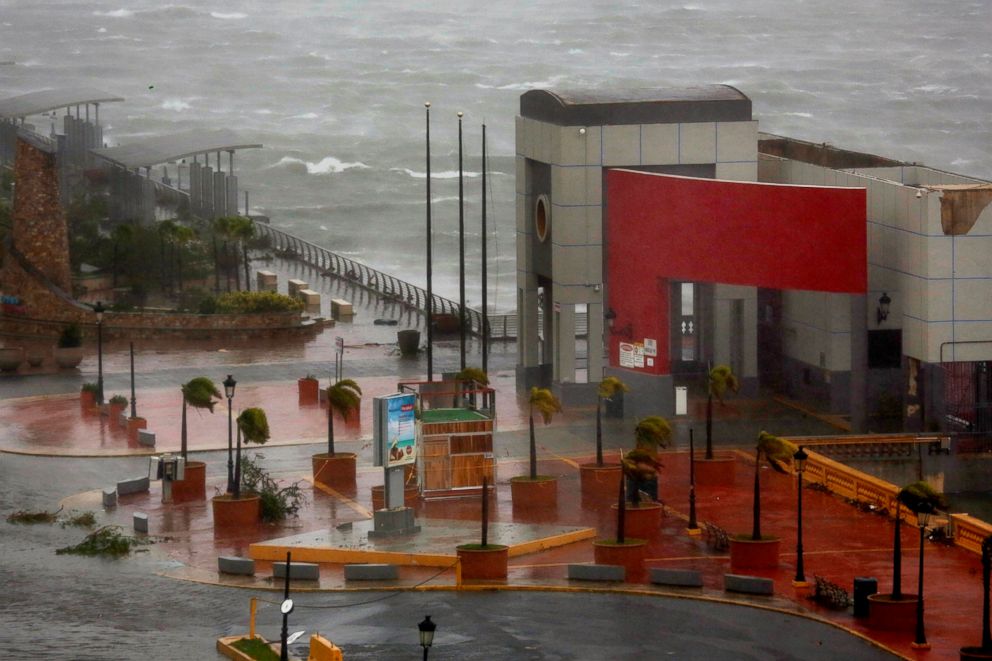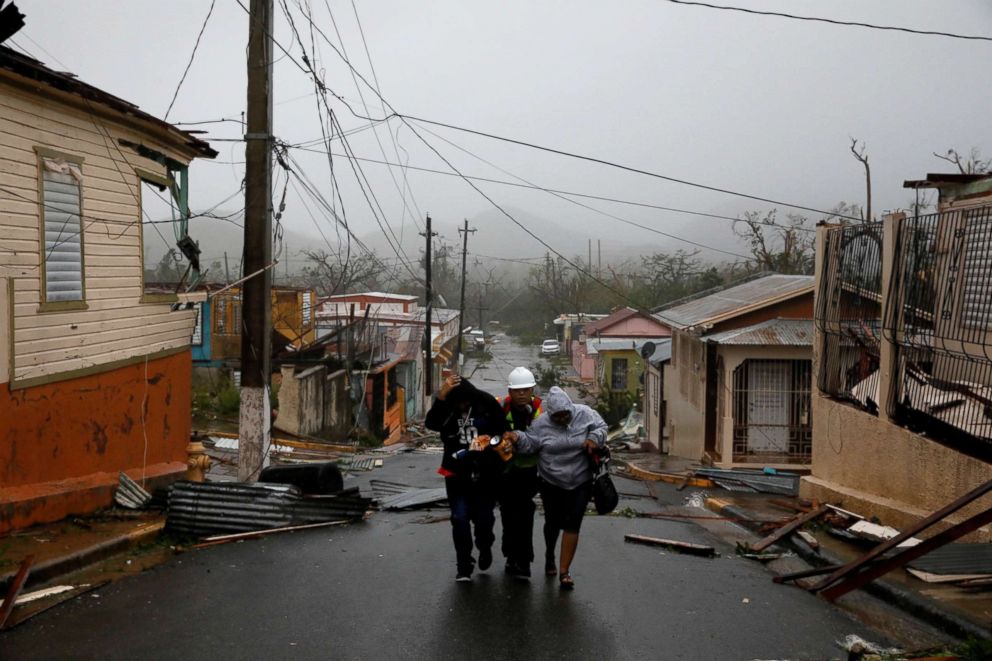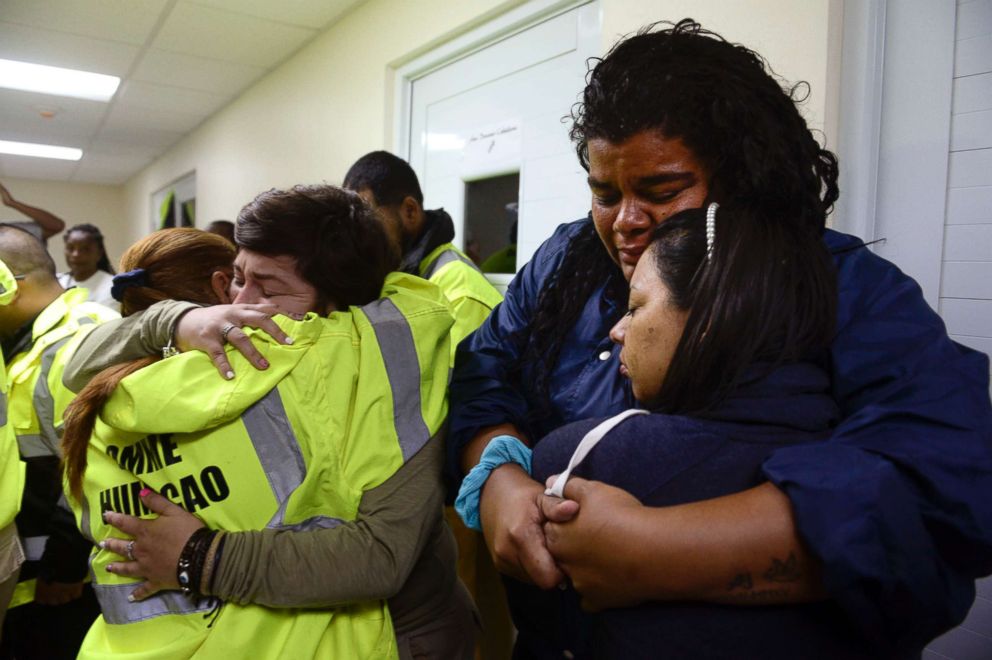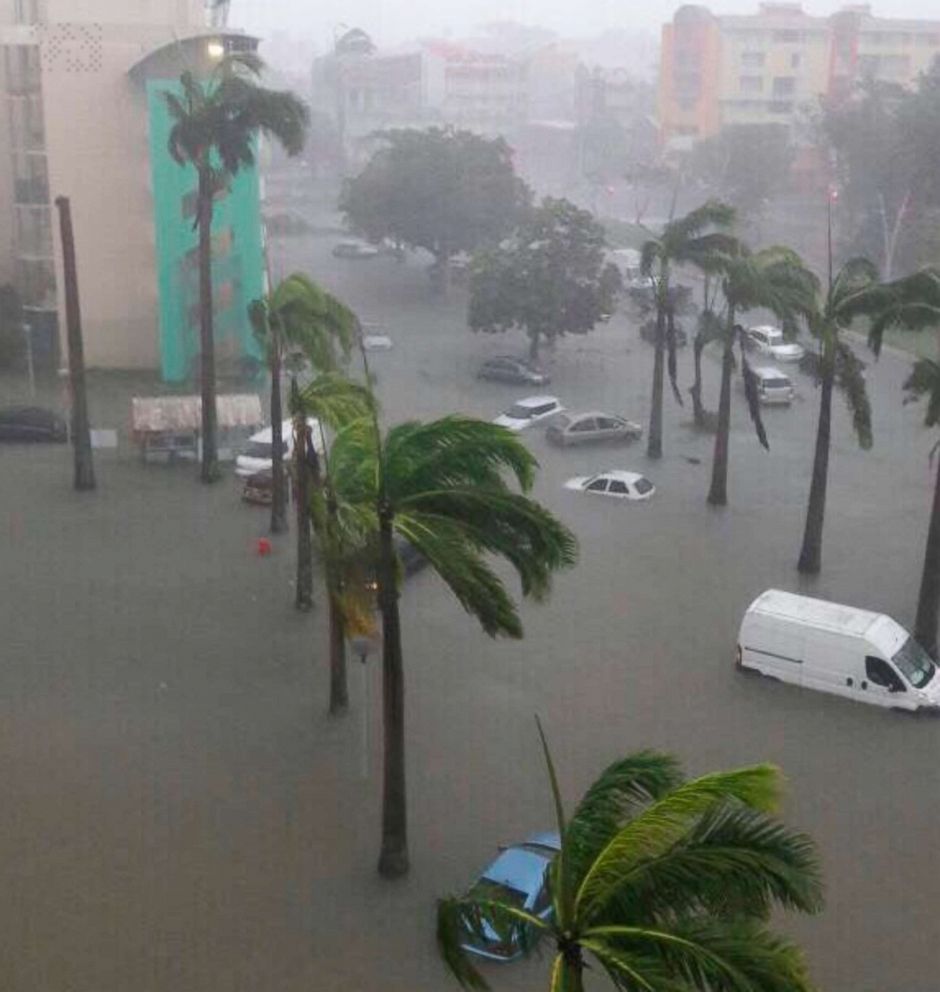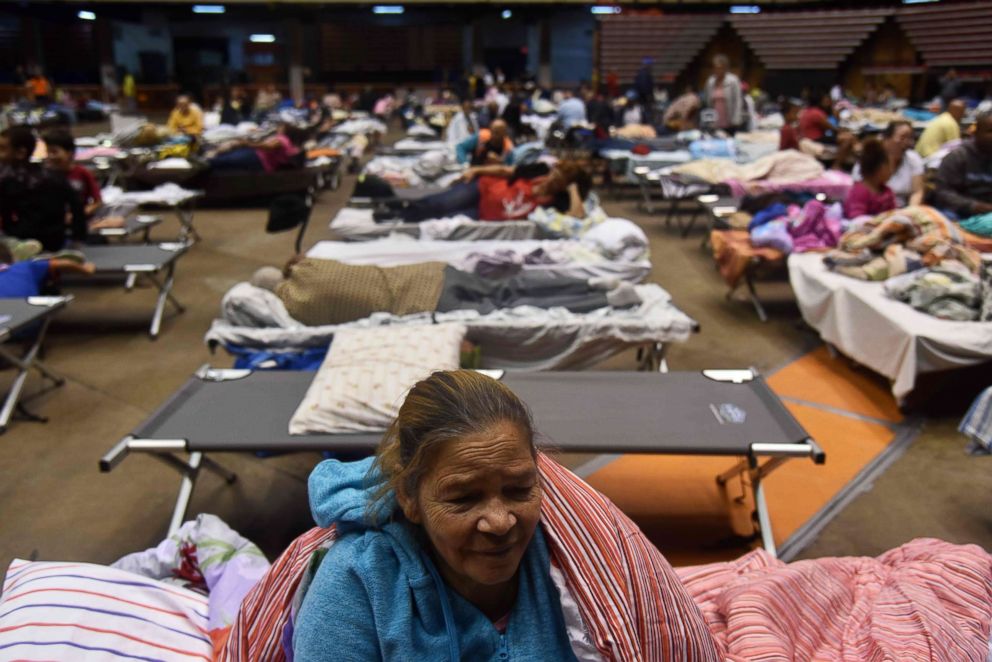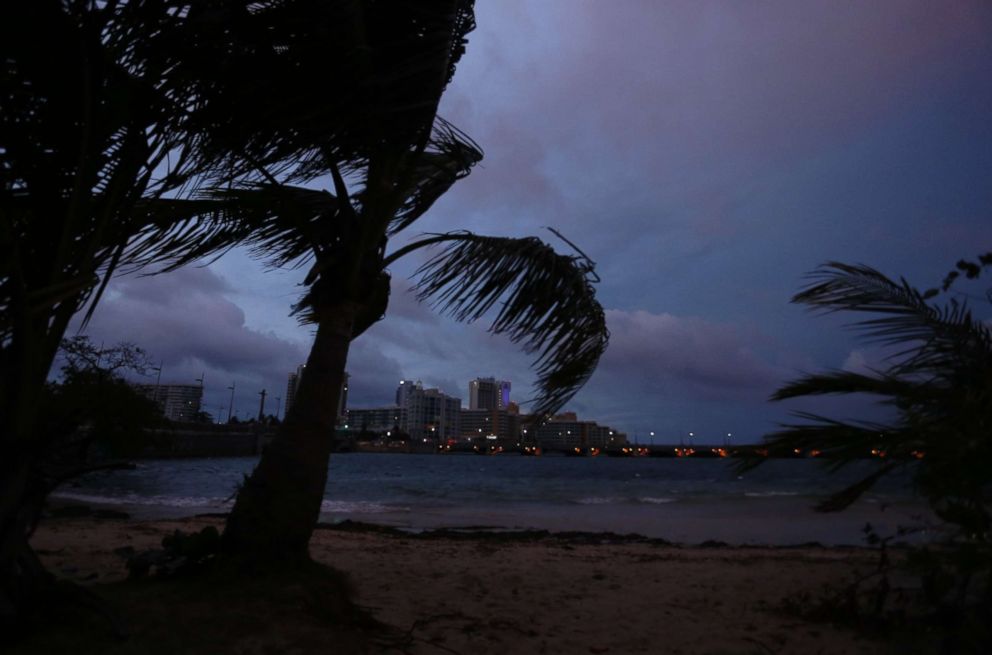Hurricane Maria leaves trail of death and destruction in the Caribbean
— -- At least 15 people have died on the Caribbean island of Dominica and many homes are destroyed beyond repair after Hurricane Maria devastated the country this week, Dominica's prime minister said Thursday.
In an emotional interview with ABS Television, Prime Minister Roosevelt Skerrit said the death toll is likely to rise and search and rescue missions are ongoing. At least 16 others are missing in some communities, he said.
“We have many deaths, but it is a miracle that we do not have hundreds of deaths in the country,” Skerrit told ABS Television.
Hurricane Maria pummels Puerto Rico, Caribbean
A category 5 hurricane ravages the islands of Dominica, Puerto Rico, St. Croix and other Caribbean Islands.The storm has led to at least 26 deaths thus far, including 15 in Dominica, nine in Puerto Rico and two in Guadeloupe.
El Nueva Dia quoted the mayor of Toa Baja, a town in northern Puerto Rico, as saying eight people drowned in the storm. The mayor also said 4,000 people had been rescued in Toa Baja.
Video posted on social media showed the massive flooding in Toa Baja on Thursday.
After pummeling the Caribbean, Maria restrengthened to a major hurricane early Thursday.
It had regained major hurricane status after moving back over warm, open waters in the Atlantic Ocean.
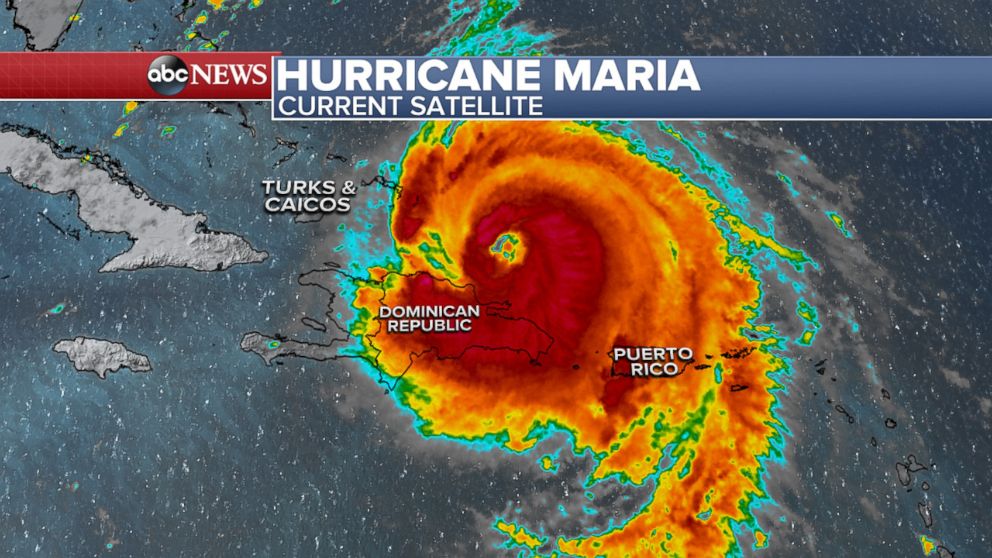
As of 11 p.m. ET, Maria's maximum sustained winds had increased to 125 mph, making it a major Category 3 hurricane, according to the National Hurricane Center. The storm's massive eye was located about 65 miles east-southeast of Grand Turk Island in Turks and Caicos. Maria was traveling northwest at 8 mph, with Turks and Caicos in its path.
On Thursday afternoon, Turks and Caicos began experiencing tropical storm conditions as Puerto Rico continued to get hit by the storm's outer rain bands. The Dominican Republic will continue to see hurricane conditions through Thursday evening.
Maria is forecast to strengthen even more as it moves north of the Dominican Republic and passes just east of Turks and Caicos by Friday morning.
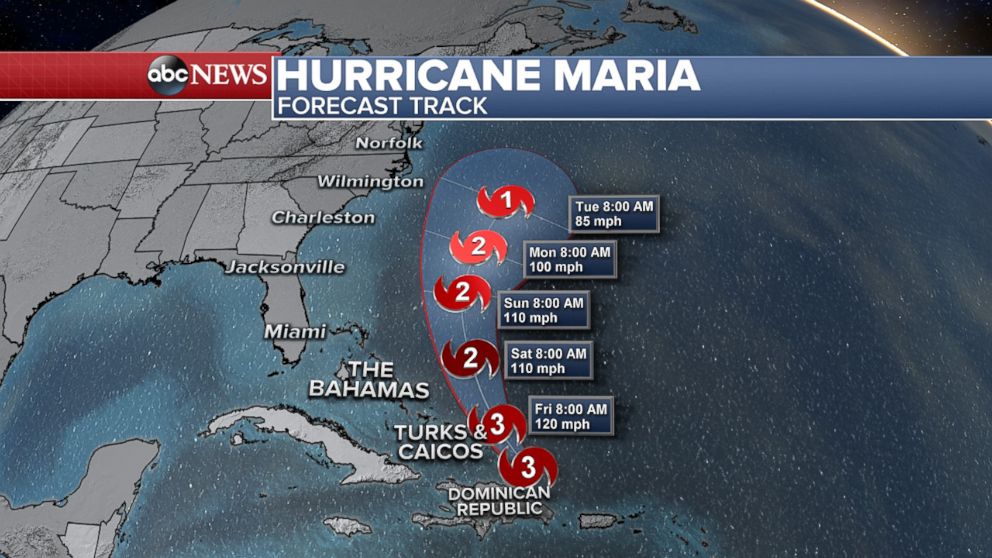
From there, Maria will likely weaken over the weekend as it moves between Bermuda and the eastern coast of the United States. The diminishing storm should move further east of the U.S. and out to sea sometime next week.
The storm's path is expected to steer clear of the U.S. mainland.
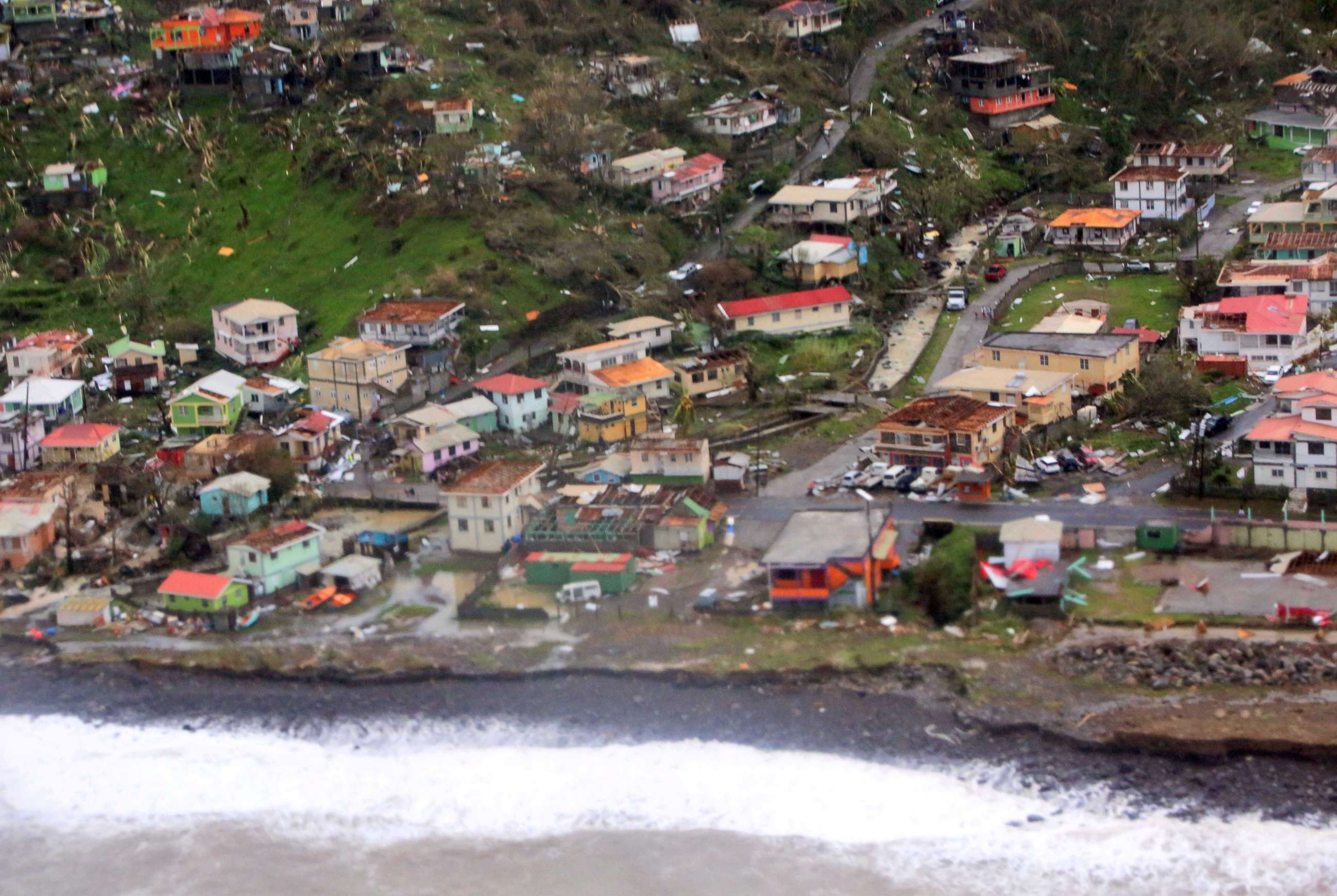
Maria leaves Puerto Rico in the dark
Even as Maria moved away from Puerto Rico, the U.S. territory was still being hit with strong wind and heavy rain. Storm surge was receding Thursday morning, but Puerto Rico was hit with 20 to 30 inches of rain in 24 hours, with some areas seeing 35 inches locally. The hurricane came ashore there as a powerful Category 4 with 155 mph wind -- the first Category 4 storm to hit the island since 1932.
A spokesperson with the Puerto Rico governor's office confirmed one person has died in the storm. The person was killed in Bayamon, just southwest of San Juan, after being hit in the head by a wooden panel.
Eight others were reported killed in Toa Baja, about 30 miles west of San Juan, by El Nuevo Dia.
Puerto Rico's emergency management agency confirmed on Wednesday afternoon that 100 percent of the island had lost power, noting that anyone with electricity was using a generator.
Telecommunications throughout the island have "collapsed," Abner Gomez Cortes, executive director of Puerto Rico's emergency management agency, told ABC News.
More than 12,000 people are currently in shelters, and hospitals are now running on generators, Cortes said. Two hospitals -- one in Caguas and one in Bayamon -- have been damaged.
The first flights to San Juan are planned for Friday with American Airlines scheduling five round-trip flights -- four from Miami and one from Philadelphia -- which will deliver supplies and aid workers. Food, water and generators are all expected to be delivered, an American spokesperson said.
Delta and JetBlue are also scheduled to resume flights to San Juan soon, but had yet to release specific details.
Cortes described Maria as an unprecedented storm, adding that Puerto Rico had not seen a hurricane of that strength since 1928.
Multiple transmission lines sustained damage from the storm, according Ricardo Ramos, director of the Puerto Rico Electric Power Authority. Ramos said he hopes to begin launching helicopters by this weekend to begin inspecting the transmission lines.
Puerto Rico Gov. Ricardo Rossello imposed a curfew on the island Wednesday from 6 p.m. to 6 a.m. ET through Saturday.
A spokesperson for Rossello said early Thursday he was with a National Guard unit in Levittown, a coastal suburb of San Juan, where as many as 80 percent of homes suffered damage and residents there had retreated to rooftops due to flooding.
Felix Delgado Montalvo, the mayor of Catano, some 7 miles southwest of San Juan, told ABC News on Wednesday there are hundreds of people in shelters and over 1,000 homes were damaged or destroyed in the communities of Juana Matos, La Puntilla and Puente Blanco. Most of the homes there are flooded and are missing roofs or have collapsed walls, he said.
About 80 percent of residences in the Juana Matos community were destroyed from storm surge and flooding. Homes there are filled with at least 3 to 4 feet of water, according to Montalvo.
Christy Caban of Nashville, Tennessee, rode out the storm with her husband and 13-month-old baby in their hotel room just east of San Juan.
"We don't have power, we don't have water," Caban told ABC News.
Meanwhile, ABC News correspondents observed widespread destruction in the town of Guaynabo, about 10 miles south of San Juan.
Trees and power lines were downed, and storefronts and building facades had crumbled. Neighborhoods in Guaynabo were filled with waist-deep floodwaters and destroyed homes that were clearly not built to any kind of code.
Guaynabo resident Ramon Caldero and his family hunkered down in their kitchen during the storm, which caused part of the ceiling to collapse in his sister's room.
"I was worried," Caldero told ABC News. "My sister was screaming."
Puerto Rico narrowly missed landfall by Hurricane Irma two weeks ago, with the Category 5 storm traveling just north of the U.S. territory. The island suffered heavy rain and wind, but nothing near the widespread damage incurred by Maria.
Speaking at the United Nations General Assembly in New York City on Thursday, President Donald Trump said Hurricane Maria "absolutely obliterated" Puerto Rico and "totally destroyed" the U.S. territory's power grid, but that the recovery process will begin soon with "great gusto."
The island “got hit with winds, they say they’ve never seen winds like this anywhere," Trump added.
Trump also tweeted a message of support for Puerto Rico late Wednesday, which was reciprocated by the island's governor. Rossello also spoke to Vice President Mike Pence by phone Wednesday.
Other Caribbean islands devastated
Maria also did severe damage to multiple Caribbean islands, including Dominica, Guadeloupe and the Virgin Islands.
The U.S. Department of State sent a message of solidarity Wednesday to the people of Dominica and all across the Caribbean who were affected by Maria.
Hartley Henry, an adviser to Dominica's prime minister, told reporters via WhatsApp on Wednesday that his country has suffered a "tremendous loss of housing and public buildings" since the storm hit, ripping off roofs and tearing doors from hinges. Dominica's main general hospital "took a beating" and "patient care has been compromised," he said.
"The country is in a daze -- no electricity, no running water," Henry said via a WhatsApp message. "In summary, the island has been devastated."
In the interview with ABS Television on Thursday, Dominica's prime minister said the island has no electricity and only limited telecommunications have been restored since the storm. Some villages are now only accessible by sea or via helicopter, he said.
“It’s going to take us a very long time to get back,” Skerrit said.
The prime minister told ABS Television that his home's roof was ripped off during the storm and he had to take cover under a bed to protect himself from falling debris.
While wiping away tears, Skerrit issued an urgent appeal for desperately needed relief aid, namely water, tarps and baby supplies.
The Ross University School of Medicine, based in Portsmouth, Dominica, announced Wednesday on Facebook that it is attempting to make contact with all of its students. More than 1,400 students and faculty have signed the registration sheet so far, and the school has reached out to the family members of more than 700 others, who informed them that they are safe.
In Guadeloupe, officials announced Wednesday two people were killed there and two others were missing due to the storm.
France's Interior Minister Gerard Collomb said some 80,000 people in Guadeloupe -- around 40 percent of the population -- were without electricity Wednesday. Many roads there are impassible due to flooding and French Navy planes have not been able to assess the damage on the island due to bad weather conditions.
In Martinique, about 70,000 homes were without electricity and 50,000 homes did not have access to safe drinking water Wednesday. Fallen trees and downed power poles have blocked many roads there, Collomb said.
Police and soldiers have been deployed in both Martinique and Guadeloupe to ensure security. More than 3,000 first responders are on the French Caribbean islands, according to Collomb.
ABC News' Benjamin Gittleson, Max Golembo, Joshua Hoyos, Victor Oquendo and Paul Pradier contributed to this report.
